June 1, 2009
Storm Photo Gallery
All Images ©
Ken Dewey, Applied Climate Sciences Group,
School of Natural Resources, UNL,
unless otherwise noted.
RETURN
to the main photo gallery index
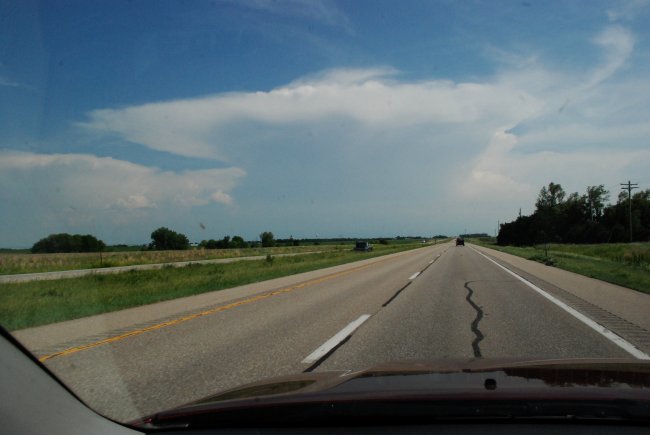
June 1, 2009: Heading south on Nebraska Highway 81 south of York,
NE.
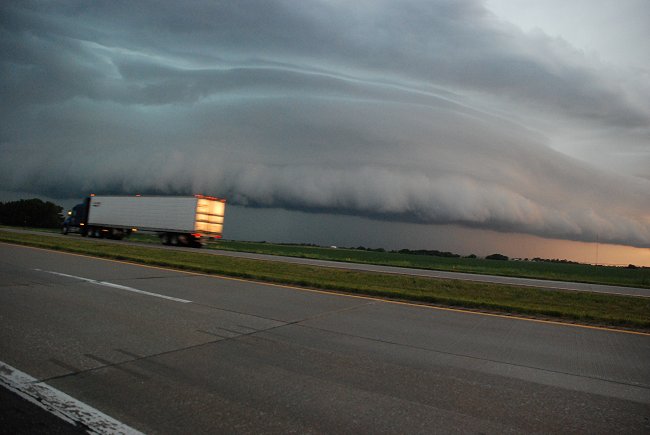
June 1, 2009: A shelf cloud created from the outflow in a
thunderstorm approaching Hebron, NE
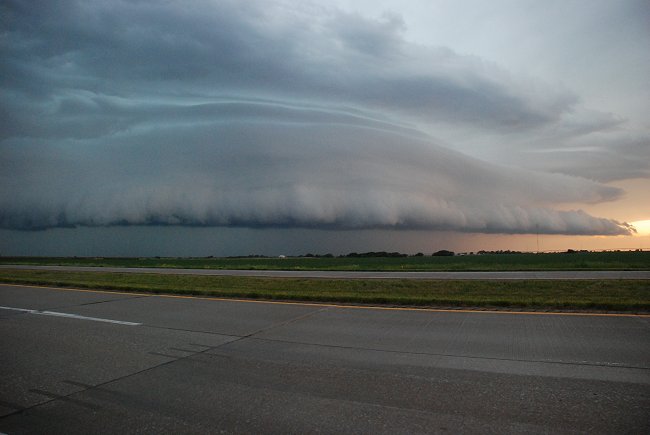
June 1, 2009: South Central Nebraska
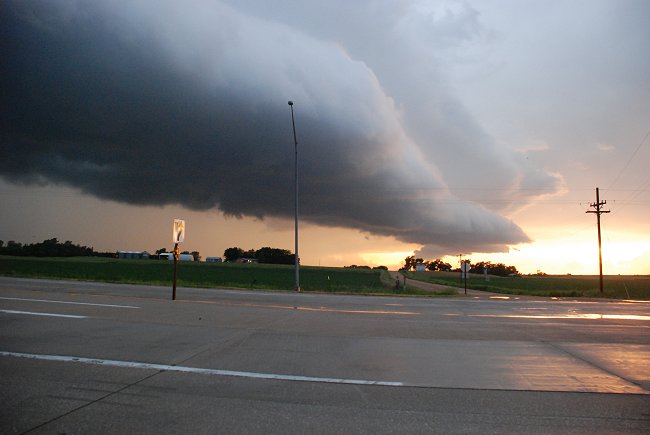
June 1, 2009: Nice storm structure in south central Nebraska.
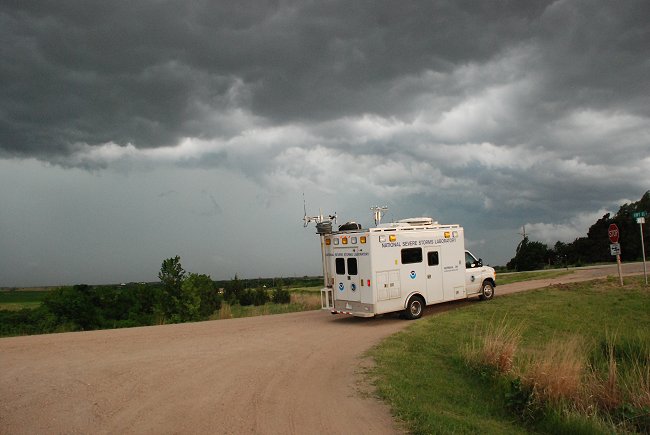
June 1, 2009: A National Severe Storm Laboratory vehicle being used in
VORTEX 2.
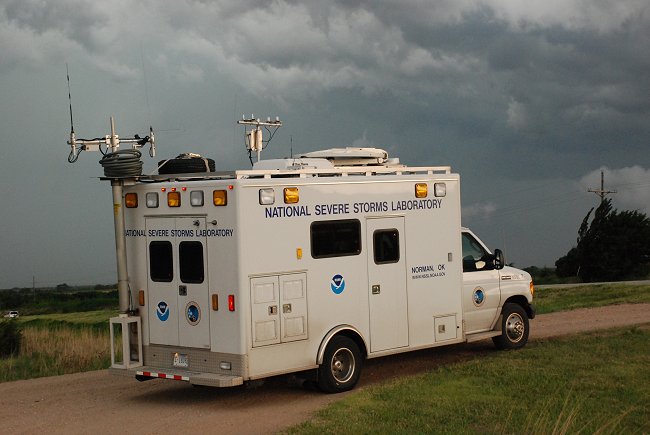
June 1, 2009: Near Hebron, NE
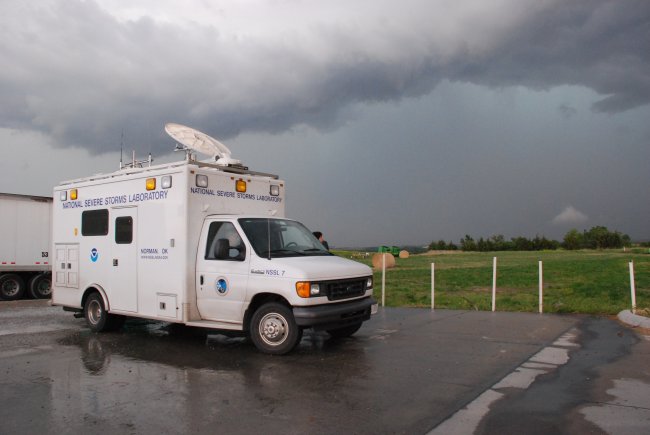
June 1, 2009: A National Severe Storm Laboratory vehicle being used in
VORTEX 2.
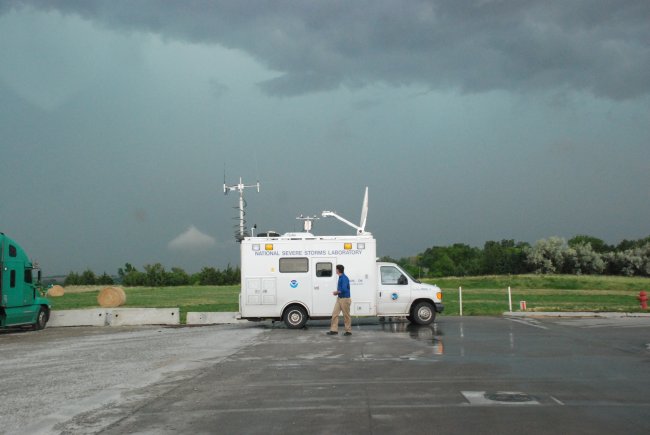
June 1, 2009: Near the Kansas/Nebraska border.
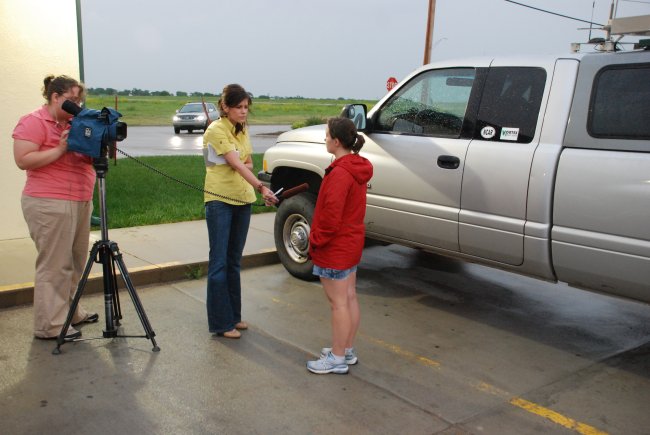
June 1, 2009: Channel 10/11 KOLN/KGIN, (CBS) Lincoln, Nebraska TV news
Reporter interviewing
Casey Letkewicz, who is a graduate student at North Carolina State University
and VORTEX2 Participant.
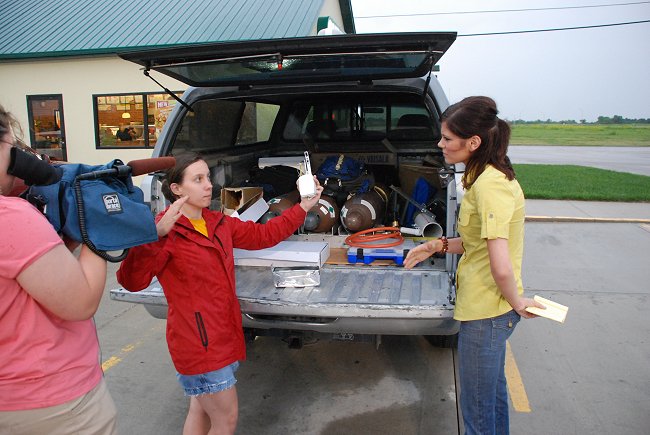
June 1, 2009.
|
|
|
|
|
|
Ingredients for the perfect storm --lightning, hail
and strong winds - generally send people in search of
shelter. Not Casey Letkewicz.
The North Carolina State University graduate student
seeks the storm.
She's one of more than 100 scientists and students
from universities across the country working on VORTEX 2
- The Verification of the Origins of Rotation in
Tornadoes Experiment. According to the National Severe
Storms Laboratory, or NSSL, it's the largest and most
ambitious field study of tornadoes in history.
"The goal of VORTEX 2 is to figure out more about what
separates an environment that produces tornadoes and
environments that don't produce tornadoes," said
Letkewicz. The group made their way across parts
of Nebraska Monday, stopping to study a storm front just
outside of Hebron. The group says figuring out how
and why tornadoes form would allow for better tornadic
forecasting and increased warning time before the storms
hit, which could ultimately save lives. "There was
an original project in 1994-1995 - VORTEX 1 and we found
out a lot about tornadoes then but we still have a lot
of unanswered questions," said Letkewicz.
This time around, Letkewicz said the team is equipped
with an increased number of, and improved, instruments
and better technology, which will allow the them to
better isolate the storms and gather data.
The weather, however, has not been cooperative.
"This year has been a drought for VORTEX 2 in terms of
finding tornadic storms. We actually have not
intercepted a tornadic system yet," said Letkewicz. "
The whole season has been really bad because one of the
key ingredients you need for tornadic storms is strong
flow in the upper atmosphere and we have not had any of
that." Despite the drought of supercells, the
team, which is roaming the southern and central plains
from May 10 through June 13, is still finding valuable
information in the storms they're studying. "It is
also important to get date on storms that don't produce
tornadoes because you can learn just as much from those
that don't produce tornadoes. It can produce a really
interesting contrast," said Letkewitz. The
graduate student is on the mobile sounding team. Their
mission - to launch balloons connected to GPS trackers,
around a storm, to gather data about the cells.
According to the NSSL, results from the previous VORTEX
field study were shown to have improved National Weather
Service warnings during the late 1990s.
|
|
|
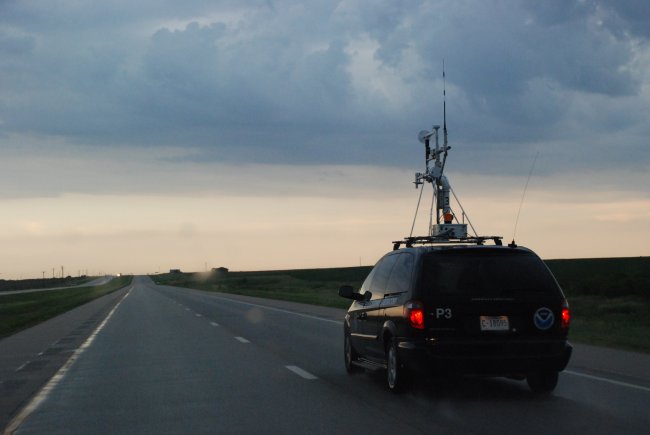
June 1, 2009: Probe 3 of the VORTEX2 Armada
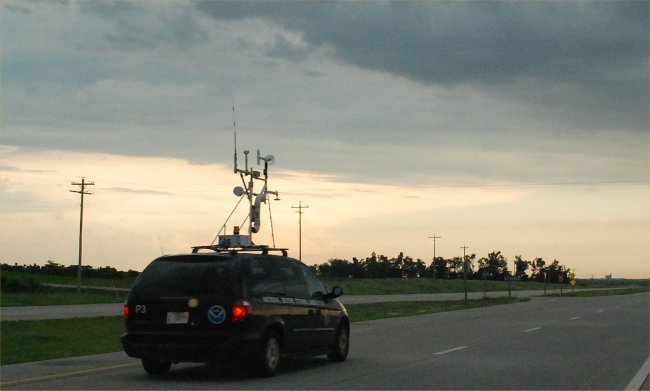
June 1, 2009
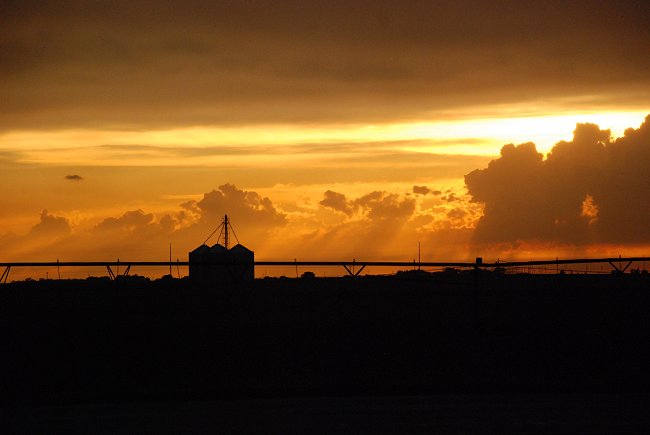
June 1, 2009: Interesting sky just before sunset in South Central
Nebraska
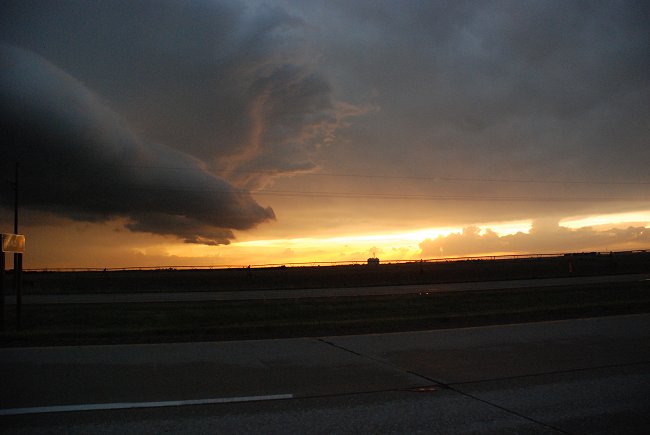
June 1, 2009: Interesting sky just before sunset in South Central
Nebraska
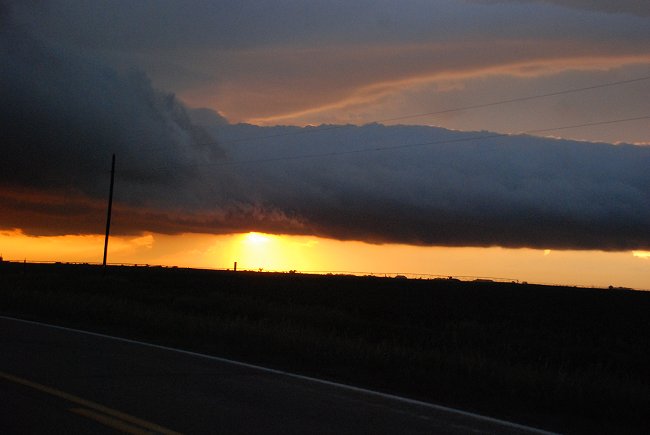
June 1, 2009: Interesting sky just before sunset in South Central
Nebraska
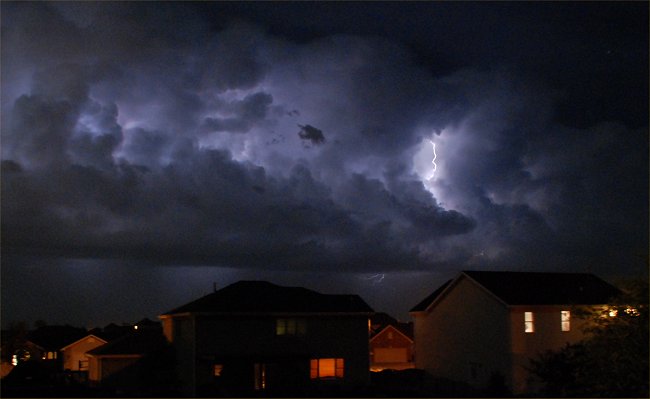
June 1, 2009: Lightning illuminating the inside of a cloud over
Lincoln, NE
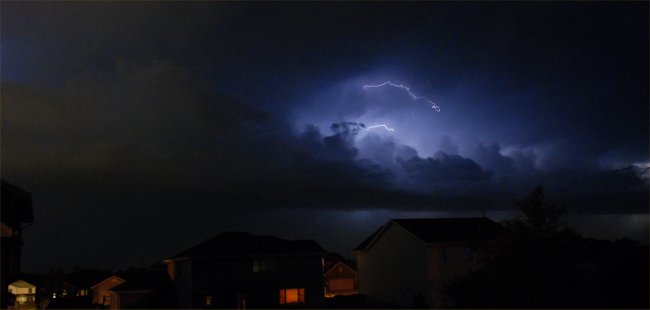
June 1, 2009: Lightning illuminating the inside of a cloud over
Lincoln, NE
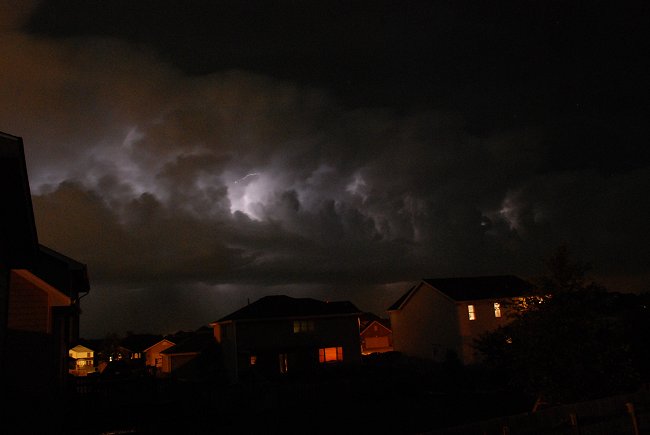
June 1, 2009: Lightning illuminating the inside of a cloud over
Lincoln, NE
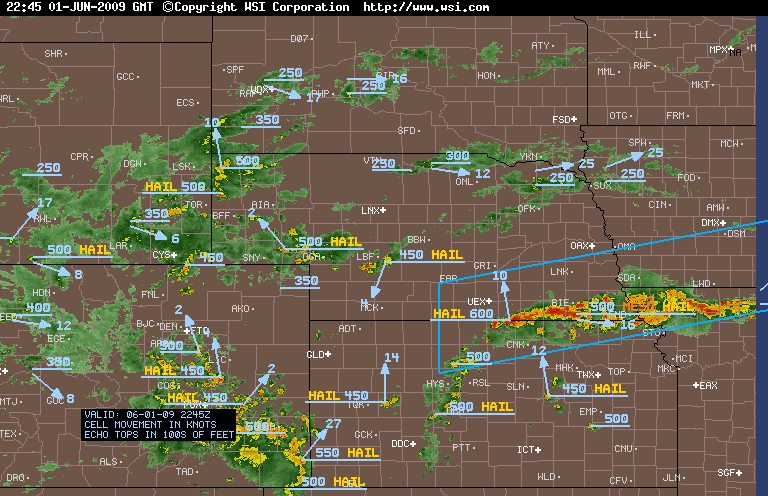
June 1, 2009



















